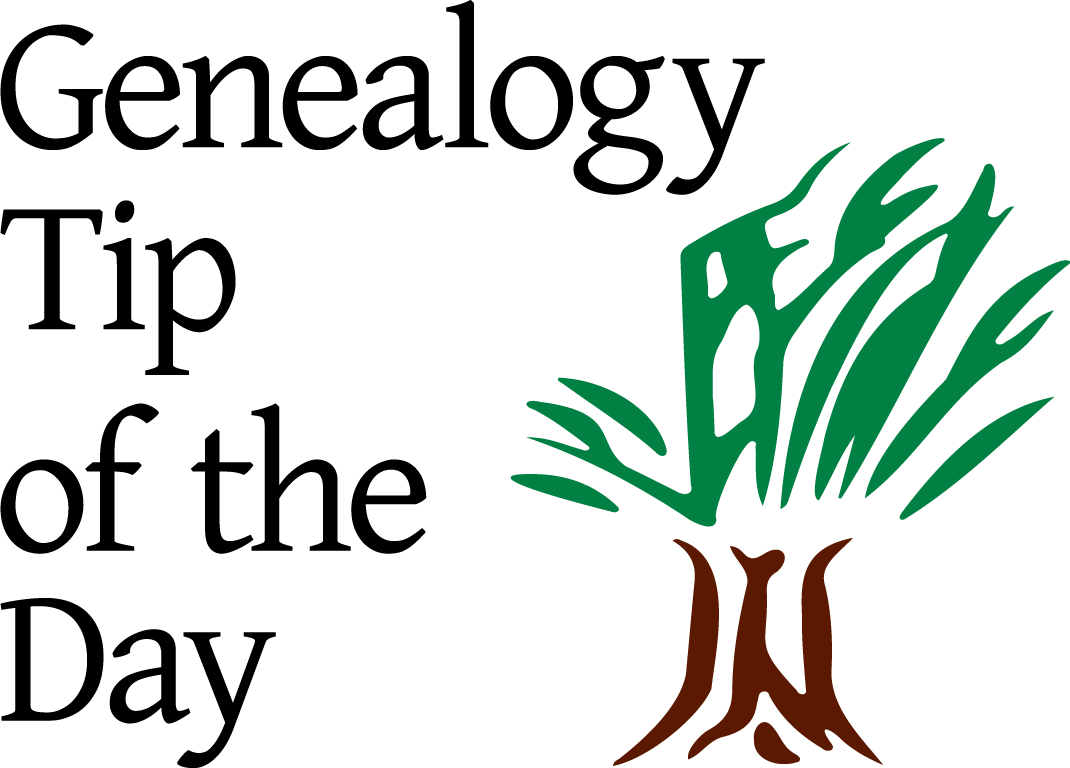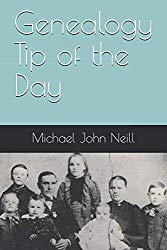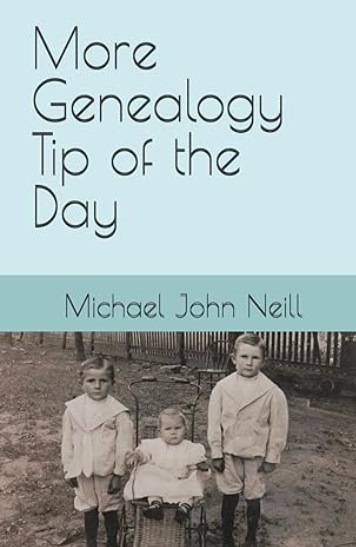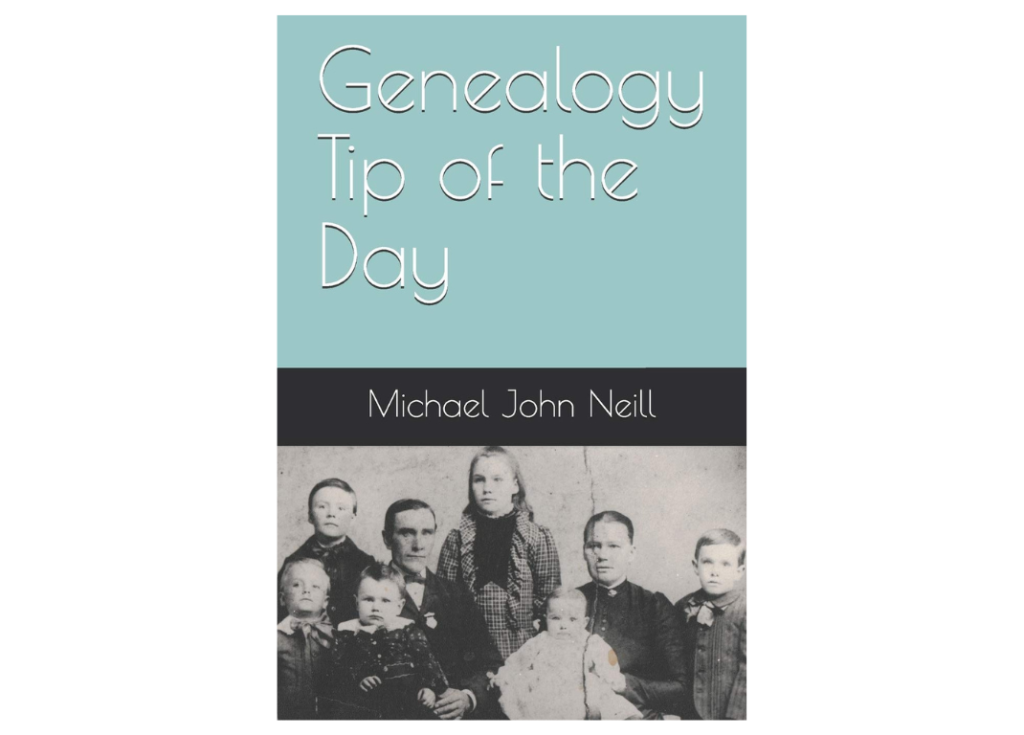This is when a couple lives apart–physically and financially–but stays legally married. There may be a court action that separates the couple’s finances and any real properties or spells out a maintenance amount given to one spouse (usually the wife). Since the couple is not divorced they cannot marry someone else, but they can act separately in other legal acts. If you encounter this phrase in relationship to a relative, determine what it precisely meant at the point and time in question. A search of land records and court records is likely warranted. Sometimes property settlements are recorded in the land records even if real property is not owned. But don’t ignore the phrase. Your relative likely didn’t.
Do you download/print/save information from your DNA matches? While it may be impractical to do this for every match, there are times where it is advisable. Most people do not delete their DNA submissions, but it does happen and once it is gone, it is gone. Deletion is more likely when a person discovers a close misattributed parentage–in other words, their father is not their father, their mother is not their mother, a grandparent is not their grandparent, etc. Sometimes a person discovers that their parent had a child of which they were unaware. There are people who welcome these discoveries. There are people who do not. If you discover a close match to you who is a surprise–for example, you have a first cousin match and you […]
The tombstone said my relative died on the 4th of February in 1882 at the age of 82. A distant relative concluded that the relative was born on 4 February 1800. That’s probably not what was meant when the tombstone gave her age. Likely the age, if it was even correct, was the age she turned at her most recent birthday. It’s possible she died on her birthday, but there’s an even better chance that she did not. If the relative was truly 82 when she died on 4 February 1882, then she could have been born between: 5 February 1799–if she would have turned 83 on 5 February 1882. 4 February 1800–if she turned 82 on 4 February 1882. That’s assuming her family knew her actual age. […]
Ignoring or throwing out those “wrong” last names can be a mistake. I have the maiden name of my ancestor born in 1851. I’ve clearly identified her father through a variety of records (vital records, estate records, and property records), but originally I thought she had a different last name–the last name of her step-father. Do I still need that name? Yes. Not because that last name was her last name at birth, but because at any time after her mother’s marriage to her step-father in 1859 and her marriage in 1869 this ancestor may have been listed with his last name. She still may appear under her maiden name in the occasional record after 1869 as well. Wrong names can serve genealogical purposes. They can be clues […]
This button from the Midwest Old Settlers and Threshers Association 1974 reunion in Mt. Pleasant, Iowa, was found among my parents’ things. Does it mean one of them went to the “old tractor show” in 1974? Does it guarantee one of them attended? I know my parents went to Mt. Pleasant event a few times. I remember going at least one time with them myself and my brother. My Dad might have gone at least once by himself. Chances are that 1974 was, at the very least, the year that someone in our family went as my parents were not in the habit of collecting buttons just for the sake of collecting them. “Event buttons” usually meant they had been to the event. Or that one of them […]
When was the last time you went back and reviewed research you had done years ago or took the time to read some genealogy conclusion you had written “back in the day.” Recently I had cause to go back and read some writing I did ten or so years ago. I realized there were leads I intended to follow up that were not followed up. In one case, I realized that a daughter I needed to research had never been researched. And I discovered one statement I made that I had neglected to source. If you are stuck on your current research, reviewing what you have done before can be a good diversion…and a great way to fix errors or omissions you may have made years ago.
Just because a genealogy assertion or statement has a source attached to it does not mean that the assertion or statement is correct. Look at the actual source. Understand it. Evaluate it. I can put myself down as the “source” for the date and place of my third great-grandparents’ marriage. That does not mean it is correct.
Do you create personalized maps of places in your ancestor’s life? Modern maps show current things. Older maps show things as they were at the time the map was drawn. Neither map may show colloquial names for places or names that only your family used. Those names may be used in family records found in the home, the occasional newspaper item, or by a relative in a family history interview or conversation. This is a work-in-progress map for the area where I grew up. Properties owned by my grandmother or my parents would be shown on plat books. The abandoned railroad tracks appear on maps drawn when the tracks were still being used. The rental property is not going to appear in any records under my parents’ names. […]
From our Facebook page: Two of my aunts “went with the years” as we used to say…because they were born in 1900. One was born today on her parents’ farm near Basco, Hancock County, Illinois. Sometimes her name gets spelled “Auche.”It was actually Altje. It’s pronounced very close to “awe chee” (at least in our family). Sometimes it’s pronounced “alt chuh.” Here’s your reminders–not every one anglicizes or uses an easier-to-spell version of their name. Aunt Altje was always Altje–she ended up having a good ol’ English last name of Worthington after her marriage. And…do you record how names are pronounced if you know? This is not just an exercise for those of us with ancestors whose names were not of English origin. Even some English names get […]
If you know where a relative or ancestor rented a home, apartment, farm, etc. track that in your genealogy database. Leases are not usually recorded (in contrast to deeds) and where a renting relative lived can easily become lost to history.
If your ancestor’s widow survived him, ask yourself the following questions: Could she have applied for a widow’s pension based on his military service? Could she have applied for a military land warrant based on his military service? If her husband owned real property, how was it disposed of after his death? Did the wife get a life estate in any of her husband’s property? Did the wife get married after her husband died? Did the wife move after her husband’s death to live with a child a distance away?
I’ve reviewing a Mexican War pension application for a widow whose veteran husband was never divorced or widowed from his first wife. The claims made in the pension are confusing and not always consistent with other records. It’s claimed that the first wife died in the 1850s, but she’s living with her children for at least twenty years after that. Because the situation is confusing to begin with and because some of the statements are inconsistent, I’ve decided to make an chart with every date or event given in the pension application, including columns for: Date Place Event Witness Comments/Miscellaneous Document/Source This way I have extracted key items from the application and can sort them in a variety of ways.
From a while back… It took me forever to “realize” where the nickname probably came from. Some family members referred to my Aunt Luella as “Law.” I had known her by those names for so long that I never questioned it and never wondered where it came from. I just took as it was. Until today. I was saying the name to myself for some reason or another and it dawned on me that the originator of the “Law” name probably said “Luella” in such a way that “law” was a part of it. I never heard it pronounced that way and didn’t say it that way myself. Of course the reason I never heard anyone say “Lawella” or “Lawellaw” is because those people never said her full […]
Some people like their bad words more than others. My paternal grandmother had three four-letter words that she spelled out until well after I knew what they spelled. If you are needing a writing prompt for your family history memory journal, how “bad words” were dealt with may bring back some memories.
Do you map out or record somewhere those names you have for places that you, and maybe only a few other people, know? Growing up we had names for various parcels of property that our grandparents or parents had slowly acquired over the years. Usually those names were for former owners. One name may have been for a former tenant on the property–I’m not exactly certain. And one name was a severe mangling of the name of a previous owner. It took me a while to figure that one out. But record those names. It may even be helpful to map them out as well.








Recent Comments